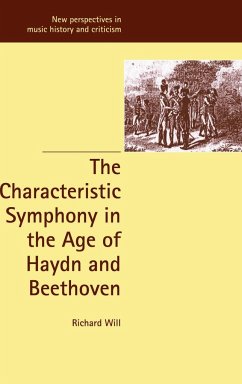Associated through descriptive texts with literature, politics, religion, and other subjects, 'characteristic' symphonies offer an opportunity to study instrumental music as it engages important social and political debates of the eighteenth and early nineteenth centuries. This first full-length study of the genre illuminates the relationship between symphonies and their aesthetic and social contexts by focussing on the musical representation of feeling, human physical movement, and the passage of time. The works discussed include Beethoven's Pastoral and Eroica Symphonies, Haydn's Seven Last Words of our Savior on the Cross, Carl Ditters von Dittersdorf's symphonies on Ovid's Metamorphoses, and orchestral battle reenactments of the Revolutionary and Napoleonic eras. A separate chapter details the aesthetic context within which characteristic symphonies were conceived, as well as their subsequent reception, and a series of appendixes summarises bibliographic information for over 225 relevant examples.
Table of contents:
Introduction; 1. Paradise lost; 2. Preaching the emotions; 3. The boundaries of the art; 4. Paradise regained; 5. Making memories; Appendixes: 1. Thematic index of characteristic symphonies; 2. Pastoral symphonies and movements; 3. Symphonies and movements by subject.
'Characteristic' symphonies have texts associating them with literature, politics, religion, and other aspects of eighteenth- and early nineteenth-century European culture. This first full-length study of the genre illuminates the relationship between symphonies and their aesthetic and social context and discusses examples of works by composers including Beethoven, Haydn and Dittersdorf.
Study of 'characteristic' symphonies, discussing works by Beethoven, Haydn and Dittersdorf.
Hinweis: Dieser Artikel kann nur an eine deutsche Lieferadresse ausgeliefert werden.
Table of contents:
Introduction; 1. Paradise lost; 2. Preaching the emotions; 3. The boundaries of the art; 4. Paradise regained; 5. Making memories; Appendixes: 1. Thematic index of characteristic symphonies; 2. Pastoral symphonies and movements; 3. Symphonies and movements by subject.
'Characteristic' symphonies have texts associating them with literature, politics, religion, and other aspects of eighteenth- and early nineteenth-century European culture. This first full-length study of the genre illuminates the relationship between symphonies and their aesthetic and social context and discusses examples of works by composers including Beethoven, Haydn and Dittersdorf.
Study of 'characteristic' symphonies, discussing works by Beethoven, Haydn and Dittersdorf.
Hinweis: Dieser Artikel kann nur an eine deutsche Lieferadresse ausgeliefert werden.








